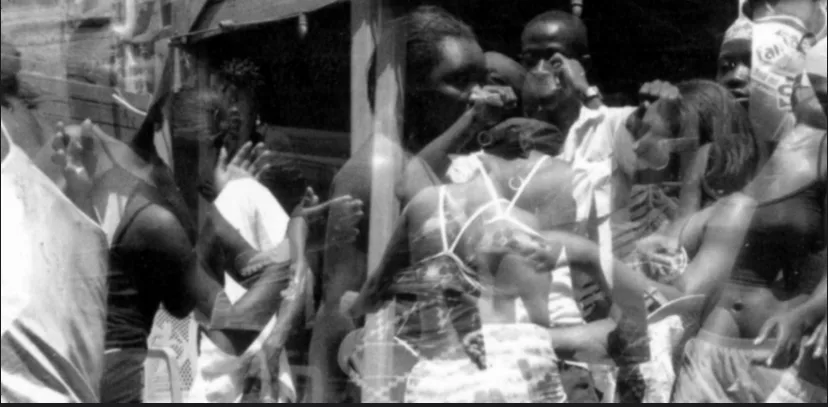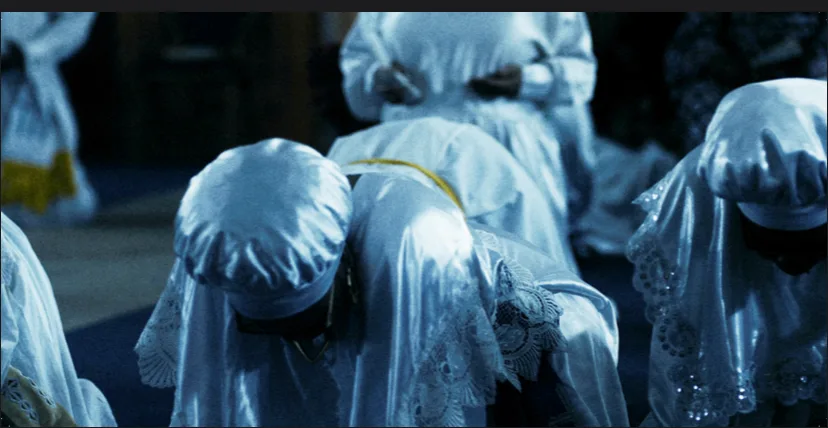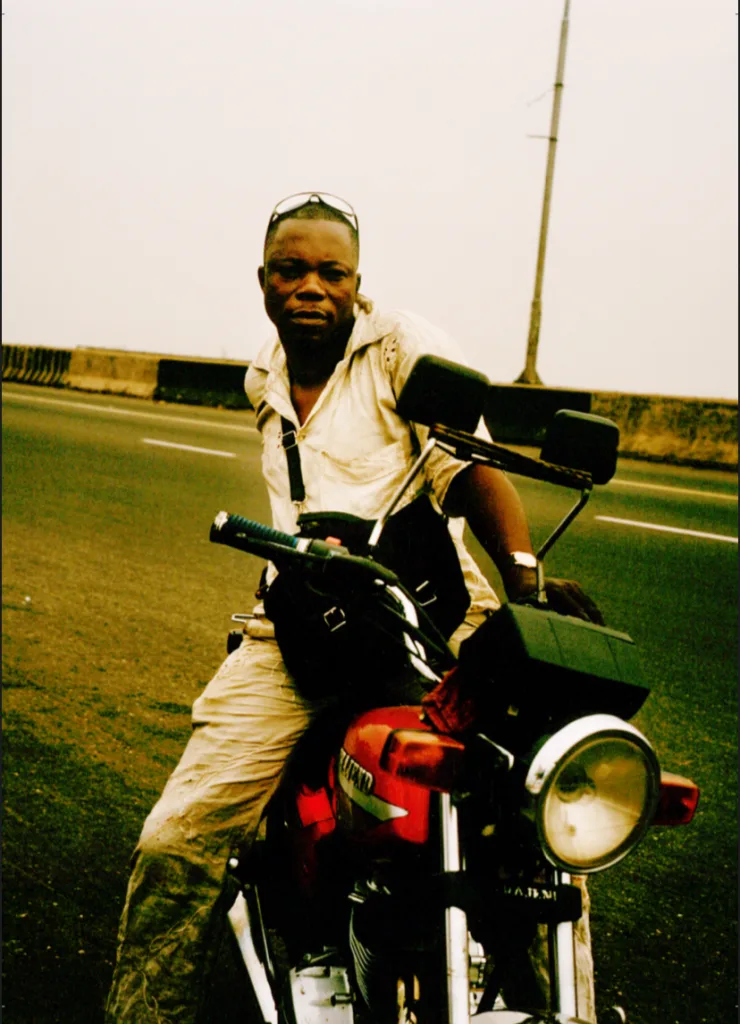As the bustling city of Lagos gets ready to host the 9th edition of ART X Lagos, visitors wait in anticipation to be drawn into the deeply evocative world of Andrew Dosunmu’s solo exhibition Restless Cities: From Lagos To The World. Known for his evocative photography and distinctive approach to filmmaking, Andrew Dosunmu’s latest series digs into the heart and hidden corners of urban life.
He examines the pulse of cities like Lagos, New York, Paris and beyond, inviting viewers to contemplate the restless energy that defines them. Visitors get to see glimpses of city life that pulse with both connection and solitude, capturing the mix of motion and self-reflection that shape these cities.

In an exclusive interview, Dosunmu opens up about the inspirations behind Restless Cities: From Lagos To The World and how his personal journey has informed this introspective and profound project. This interview takes us through his unique approach to urban storytelling and the reflective journey that Restless Cities invites us to take.
T.E: What inspired the theme of Restless Cities in your exhibition?
A.D: Honestly, what inspired the theme is the fact that I was born and raised in Lagos, and all the cities I grew up in London, Lagos and New York are cosmopolitan cities. They are cities with different types of migrants and people in search of something. People are in search of something so they come to Lagos from all over the country and all over the continent, people are in search of something so they go to London, Paris, and New York. All these cities are cities that attract people and between the attraction, there is a restlessness. Individuals with different multicultural languages are all struggling to get a voice, a recognition, they are all struggling to achieve something. So to me, that’s what Lagos is. That’s the city I was born and raised in and it was very much the inspiration for this work. Also, beyond that, the reason I love versatile cities is that the literature that inspired me the most as an artist when I was a kid was a great series by Nigerian writer Cyprian Ekwensi, that talked about Post Independence Nigeria and the Restless City and how everyone comes to Lagos, the hustle and culture with people greeting each other. It was really fascinating and it made a dearth in my childhood. Anytime I go to these other cities, I experience that and it became an homage to Cyprian Ekwensi. My first movie was called Restless City but because I didn’t have the finance, possibility, love and hope, that production could not be done in Lagos so that is why I really wanted to connect this body of work with Lagos.
T.E: Do you see “restlessness” as a global condition or is it tied to specific cultural or political contexts?
A.D: I think it is a global as well as political condition. It depends on which part globally but it is definitely tied to the political conditions in countries of the South. Take our country Nigeria, for example, which is full of incredible minds, and youths who are driven but restless because of the society which is the same thing for me. Although I was lucky to escape it, there are so many amazing and youthful minds that are caught up in this restlessness, because politically the situation is of such that they can’t even function. We’re talking about petrol, education etc, these are things that affect people globally but particularly for countries of the South. I always think about that when I take pictures, it’s really just beautiful memories of under developed countries that really shaped who I am and what I do is about that.


T.E: How do photography and filmmaking influence your approach to visual storytelling in this exhibition?
A.D: I don’t see a separation between photography and filmmaking. The beauty of photography is that it’s just me and my camera around my neck while film is a collective medium. In a film, a director is just as important as everyone else I.e DOP, production designer, costume designer etc. The equality of the same space and there is no oga (boss) in it. I believe everyone is just as important but photography is a single medium, it’s like a jotter for me, it’s a place that I process my ideas, and eventually it evolves into a bigger space, which is cinema. So that is why I believe they work hand in hand.

T.E: How do you hope audiences, especially those familiar with these cities, will connect with or interpret your work?
A.D: What I’m interested in is people of African descent, whether you’re in Bolivia, Peru, Ecuador or Brazil. When we think of people of African descent, we tend to just think of the United States, Brazil, England, but there are Africans that have been in Bolivia longer than they’ve ever been in America and to me it’s really about connecting that conversation of Africans around the world. I’ve been to places in Bolivia where you walk in there and you think you’re in a village in Aba because it’s just black people. They’re not black Africans that migrated, they are black people that have been there for 700 years and I’m really interested in the conversation that people in the early 19th and 20th century have been having. People like Marcus Garvey, Edward Blyden and all the people that have talked about the reconnection of people of African descent. They were talking about it politically, but I’m really interested in that conversation of us. How can I connect and celebrate these people visually? We have to be celebrated because we have always been the victims, constantly subjected to certain standards. Through connection, we will discover that we have way more links than we think we do. We have a lot more in common than we think and to be honest the only thing we don’t have in common is language. So how do we connect it and talk about this joy and beauty in ourselves. I’m not trying to talk to audiences in the accidental world. I’m trying to talk to my people and I hope they get me.
T.E: Are there currently plans to expand this body of work or exhibit it in other cities around the world?
A.D: I’m very excited to be doing this with Art X Lagos because I’m not really done anything on the continent. As beautiful as it’s going to be, it’s a shame that it’s just a three day fair because it’s a lot of work to do in three days. I’ve been doing this for two decades, so it’s so much body of work to be condensed but I’m just glad to be able to do something that showcases my short films, long films, photographs, and videos. So, yes, I’d I love to do something much bigger, which really projects into the work itself but this is a wonderful starting spot. Art X Lagos is my favorite art fair on the continent to be honest. It’s beautiful, sophisticated and elegant so I’m glad to be a part of it.

T.E: What message do you have for upcoming visual storytellers?
A.D: It’s really about getting on with it, it’s about doing it. If you want to be a writer, take a pen, sit before your computer and write. If you want to be a photographer or anything basically , it does not matter about if it’s not what you want it to be yet, it is about doing the work, that’s the key. It is about being involved, studying, exposing yourself to different cultural aspects. It’s about the doing. The issue is that everyone wants to be the top notch immediately but it’s not about that, it’s never about that. It is about the process, the opportunities to keep doing it, knowing what you want and being in the process.
For more update and information about the exhibition, visit https://www.artxlagos.com or @artxlagos on Instagram. You can also connect with Andrew Dosunmu via his Instagram page @shot_by_andrew_dosunmu


